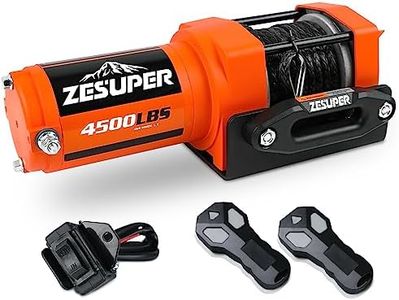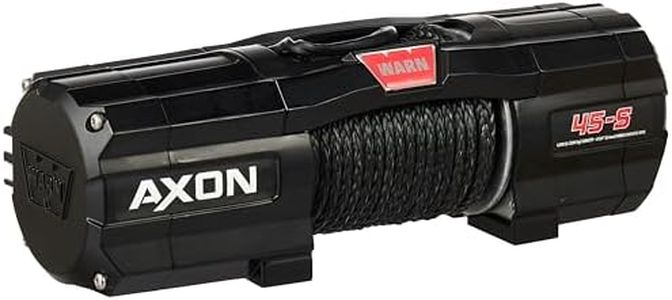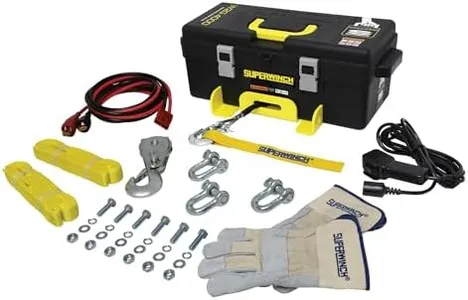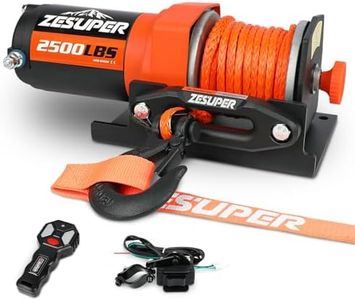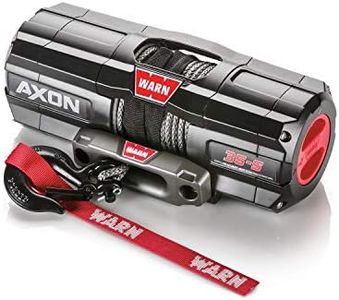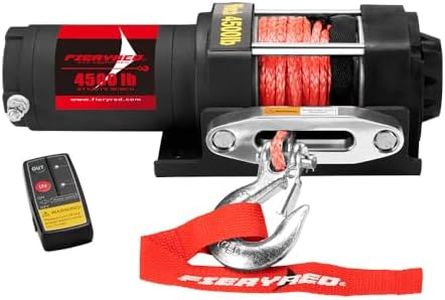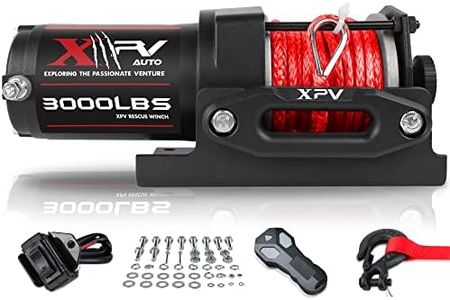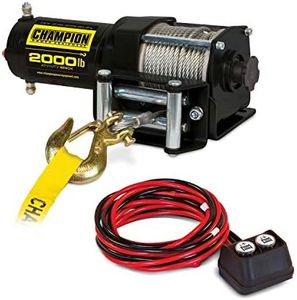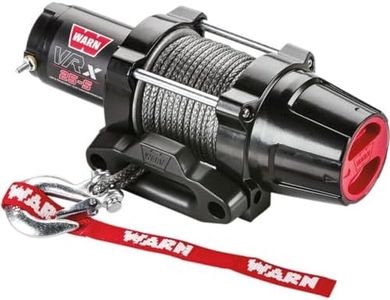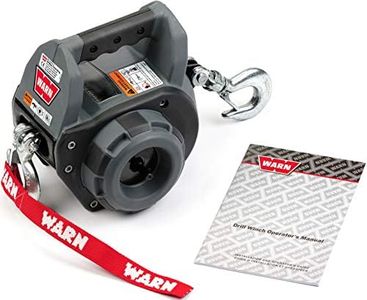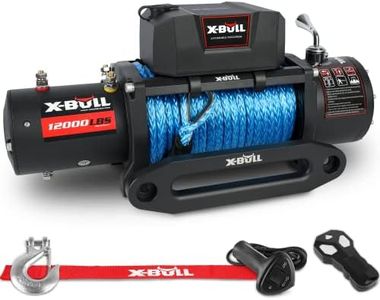We Use CookiesWe use cookies to enhance the security, performance,
functionality and for analytical and promotional activities. By continuing to browse this site you
are agreeing to our privacy policy
10 Best Atv Winches
From leading brands and best sellers available on the web.Buying Guide for the Best Atv Winches
Choosing the right ATV winch is all about understanding your needs and the typical situations where you'll use it. An ATV winch is a handy tool for pulling your vehicle out of tough spots, moving heavy objects, or lending a hand to someone else stuck on the trail. The right winch should match the size of your ATV and the kind of terrain you tackle most often. By focusing on a few key specifications, you'll ensure you get a winch that is strong enough, reliable, and easy to use for your adventures.Pulling Capacity (Rated Line Pull)The pulling capacity, sometimes called the rated line pull, tells you the maximum weight the winch can safely pull in a straight line. This spec is critical because you need a winch that can handle your ATV's weight, plus any extra load you might have. Usually, winches range from about 1,500 to 4,500 pounds for ATVs. For smaller, lighter ATVs and gentle trails, a winch at the lower end is often enough. For larger side-by-sides or riding in deep mud, snow, or steep hills, you’ll want a higher capacity. A good rule is to choose a winch rated to pull at least 1.5 times the weight of your fully loaded ATV.
Rope Type (Steel Cable vs. Synthetic Rope)ATV winches use either steel cable or synthetic rope. Steel cable is durable, abrasion resistant, and handles rough surfaces well, making it common for heavy-duty or rocky work. However, it can rust and needs gloves for safe handling. Synthetic rope is lighter and safer if it breaks, as it doesn't snap back dangerously. It also floats, which can help in muddy or watery spots, but it's more vulnerable to abrasion and sun damage. If you mostly ride in wet, muddy environments, or want easier handling, synthetic is often preferred. If you’re in rocky, abrasive conditions or want maximum durability, steel cable might be best.
Motor TypeMost ATV winches use either permanent magnet or series wound motors. Permanent magnet motors are lighter and more efficient for regular, light to medium use, but can lose power in extreme cold. Series wound motors are more robust and better for heavy, frequent use, though they typically cost more and use more power. For typical weekend riders, permanent magnet motors usually do the job. If you plan to do frequent, demanding winching, consider series wound.
Line SpeedLine speed is how fast the winch pulls in the rope under load. Faster line speeds mean you can recover your ATV or help someone else more quickly, which is handy if you get stuck often or in situations where quick recovery is important. However, winches with high line speed can use more battery power. If you value quick recoveries or group riding, look for higher line speed. If you winch rarely or efficiency is more important, regular line speed is fine.
Control Options (Remote vs. Handlebar Switch)Winch controls come as remote operated (either wired or wireless) and handlebar-mounted switches. Remote controls let you stand clear of the ATV for safety or better visibility, while handlebar switches give you control right from your seat, which is convenient and often faster. Some winches come with both options for flexibility. If you ride solo or want to stay on your ATV, handlebar control is great. If you plan to help others, use complex angles, or want to stay clear for safety, a remote is better.
Mounting System CompatibilityEvery ATV has specific mounting points for winches, so compatibility with your ATV is important. Some winches come with universal mounting kits while others require model-specific brackets. Choosing the right mounting system ensures safe, stable installation. To pick the right one, check your ATV’s compatibility and ensure the winch can be securely installed without modifications.
